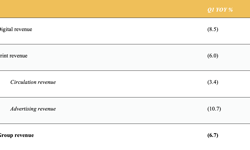The system functionality available to frees and leaflets (F&L) operations has improved greatly over the last ten years. This has been driven by increased computing power, which has enabled the automation of many of the manual processes involved in round and distributor management, processes which have become more complex with the introduction of more onerous VFD requirements and government legislation.
Ten years ago, for instance, processing distributor wages might have taken days, and involved much manual intervention; now it can be done in a couple of hours and be fully automated. Changes to distributors and rounds had to be recorded manually, or put in the diary for future actioning, because the systems couldn’t hold more than one issue’s distribution record. Now, full history is retained and planned changes input in advance to be triggered automatically at the appropriate time. The last ten years has also seen, says Atex’s Nick Cutts, the emergence of flexible databases that have facilitated better targeting, though use of demographics. Another trend, says Press Computer Systems’ Jerry Hall is the increased availability of the postal address file (PAF) and its integration into F&L systems. Without it, he says, publishes would be very reliant on local knowledge.
So, has the F&L sector reached its systems limit? Are there any more challenges that can be met with system solutions? Can their working practices be made any simpler? No, yes, yes. There are four areas in which system solutions have the potential to dramatically change the way F&L teams work.
1. Distributor communications
The F&L process is a long way from being a paperless one, and a great deal of that paper is expended in the management of distributors. Fernhall’s Robert Marson says that "there are a lot of inefficiencies between the supervisor at the coalface and the team back in the office." Currently the management of the supervisor and distributor database is the responsibility of the circulation department. Typically the supervisors will fax changes to the distributor list to the office for the data to be keyed in. In the other direction, the circulation department will print off round cards and lists, and wage slips and then van them over to the supervisors to circulate. This whole area is screaming out for rationalisation. In our online world, the supervisors should be able to key distributor changes direct to the database; distributors should have the option of receiving their wage slips by email, or text, and also of printing out their round cards direct from the internet. One of the factors holding up progress in this area is the nervousness of newspaper groups about allowing external access to IT systems, but MGB Systems’ Mark Goldsmith, for one, does not see the task of setting up tightly controlled and secure access as a big problem.
2. Mapping
Ah mapping. Mapping, mapping, mapping. There is probably not a circulation team in the country that has failed to be impressed by a mapping dem, yet, despite that, system providers were winning more plaudits than actual orders. However, the decreasing cost of the maps themselves has started to make the applications more affordable and orders are starting to come. South London Newspapers has been using a mapping solution, fully integrated with its F&L system, since last November and Paul Sharpington, head of distribution, is very excited about the impact it is having and will continue to have on his business. There are four areas in which mapping can help:
* Round creation
If you need to set up a distribution from scratch, then mapping is a great tool to use. The now widespread use of PAF data means that round creation is not quite the pavement slog it used to be, nevertheless a visual representation of the round makeup is valuable. After all, as Paul Sharpington says, "a picture paints a thousand words." The Guardian & Manchester Weekly News installed mapping in 2003 to facilitate the process of round creation, after they had decided to bring the distribution of their newspapers inhouse.
* Round reorganisation
Postcodes rule in the world of direct marketing. Third party demographic coding typically aligns to postcode boundaries, and, as a result, leaflet bookers frequently define their orders in terms of postcodes. This means that publishers whose distribution network is not based on postcode boundaries have to spend a lot of time matching leaflet orders, specified in postcodes, with their distribution network, which is not. This is rarely a clean fit. They could save a lot of time and effort, and be better placed to win more orders, if their rounds were postcode aligned. Again, a visual representation of the distribution area, and the ability to build rounds with the click of a mouse, makes the task of round reorganisation a lot less hassle than it once was. Paul Sharpington used his new mapping system to reorganise his round structure for an area covering a million plus households. The project was started in November 2005 and completed in March. He is convinced that if he had been doing it manually, it would not only have taken two years … but have been wrong at the end of it.
A by-product, and certainly not the primary justification, of installing mapping systems is the way it enhances the profile of the circulation department internally. Senior management gets enthused and engages more fully with the circulation operation. PAF files alone, despite their usefulness, never lit their fire in quite the same way.
* Round management
Being able to see a visual representation of your distribution area allows you to spot uncovered rounds, because they stick out like a sore thumb (the unshaded bit!). It also means that poorly constructed rounds (too small, too large, motorway running through the middle) are easier to spot and rectify.
* Leaflet sales
Paul Sharpington’s primary justification for the mapping investment was increased leaflet sales. Most of the early ‘wins’ with the new system were in improved round efficiencies and managing the rounds reorganisation, but Paul is starting to use it as a sales tool and the early signs are very encouraging. As currently configured, mapping is only really usable in face to face selling, although advances in communications technology will, presumably, mean that prospects will be able to access the maps remotely in the future. Mapping is a hugely impressive tool in a sales pitch. It provides proof of your coverage claims and the prospect can see the campaign built before their very eyes (give them the mouse, and they can build it themselves). It demonstrates your control over your distribution area. It gives you credibility and them confidence. It is much harder to be this impressive when your sales tools are hot air and a printout.
Also, back in the office, when you create a leaflet order, it is useful, says PCS’s Jerry Hall to "be able to press a button to see a cluster – if you’ve missed an area, then it is much easier to spot visually than from a list."
3. Targeting
The F&L sector has been talking about round level targeting (RLT) seemingly forever, yet many publishing centres are still unable to provide this. The key is having your round structure postcode aligned (and we have shown how mapping solutions can help here, although the alignment can be done using PAF data) and then affixing a demographic code (Mosaic, for instance, or your own in-house classification) to the round. There are no system constraints holding up progress, just the unwillingness of some publishers to take the necessary steps. So, it might be a bit premature to talk of life after RLT, when so many publishers haven’t yet made it this far, but, presumably, the next step is house level targeting (HLT) and the storing of demographic information against the household. As MGB’s Mark Goldsmith says, "one option would be to import lists of addresses, perhaps subscriber lists, into the system, which would then divide the data into the existing round structure and then print off round cards just showing those addresses to be delivered to." This would enable newspaper publishers to compete more fully with the likes of Royal Mail.
Whereas demographic targeting is being increasingly used in the distribution of leaflets, there is also the potential to use it to refine the distribution of the newspaper itself. Currently, most newspapers are distributed on a mass approach (with perhaps a few areas – too rich / too poor / too dispersed – excluded), but more sophisticated targeting would enable publishers to match the distribution more closely with the most receptive demographic profiles, thereby cutting down on waste and improving readership.
4. Administration of leaflet orders
The processing of leaflet orders is a manual process in most circulation departments. Typically, the orders are faxed through and someone then keys the information onto the system. Depending on the number of orders, you are looking at two to three days of keying work. Some suppliers have come up with an import function to automatically load these orders onto the system, a process that shortens the time frame dramatically. Some Newsquest centres, for instance, are processing their Newsquest Direct orders in this way. Other centres have access to these functions, but have chosen not to roll them out, perhaps as a result of user resistance. Automation is not always a big vote winner.
The process of leaflet ordering could be further rationalised by allowing the client direct access to round data. Fernhall’s Robert Marson sees a time when bookers of leaflet campaigns will log onto a website and build campaigns themselves, making full use of ‘what if’ scenarios to construct the campaign.
Morphing into distribution companies
Distribution operations at the larger print centres have long seen themselves as separate profit centres, in competition with companies like TNT Post and Royal Mail in offering third party direct marketing solutions. They are branding themselves (Paul’s operation is Letterbox London) and marketing themselves more aggressively. This process is likely to accelerate over the next few years, underpinned by some of the developments above. The more sophisticated the operation, and mapping and house level targeting are important parts of that offering, the more they will be able to compete. Paul foresees a scenario where their supervisors become full time employees, managing a greatly expanded distribution operation, perhaps split into two levels; one level to distribute the newspapers with inserted leaflets (as at present, and using kids) and another level doing dedicated leaflet drops, both round level and house level, separate from the paper (using adults). The direct mail sector is huge, and there is lots of potential for newspaper publishers to grow their slice of the action.
Most of the trends mentioned above are not new. They are being done in some shape or form already, but certainly not industry wide. There are between five and ten publishers that are centres of excellence and are continually pushing back the boundaries. The bulk of the industry is a little way behind, following with varying degrees of enthusiasm. And then, says Atex’s Nick Cutts, there are those publishers for whom F&L has always been, and always will be, a back-of-the-fag packet operation.
| Thank you to the following for their great help with this article: Nick Cutts (Atex) * Mark Goldsmith (MGB Systems) * Jerry Hall (Press Computer Systems) * Robert Marson (Fernhall) * Paul Sharpington (South London Newspapers) |










